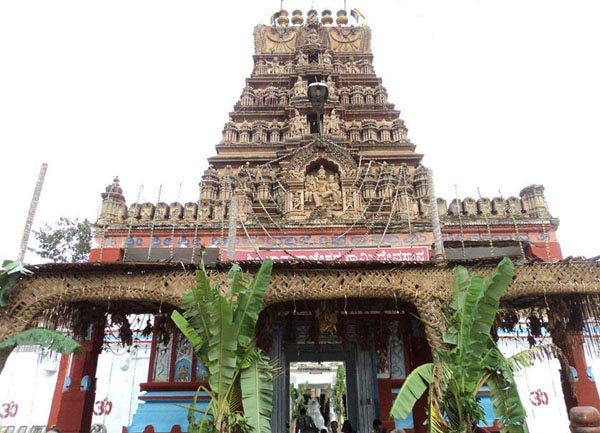Chamarajanagar Temple

Information of Chamarajeshwara Temple, Chamarajanagar, Karnataka
Chamarajeshwara Temple is an historical Hindu temple built in Chamarajanagar District in Karnataka State in India. It is a famous temple for the followers of Hinduism. The lord Shiva is the primary deity and this is found in the Linga type of sculptor. This is the biggest Shiva temple in Chamarjanagar and well known for its Car festival. This temple attracts many Hindu pilgrims on Shiva Rathri festival. This is a great place for pilgrim and also for peoples who are passionate for art and structures. Since, this temple is known for having a splendid tower on its entrance. Its local peoples use its mandapa (porch) as a cultural place here. In festival times it is found in full of grace and glory with traditional rituals and cultural activities. More than 1000 peoples attend its festival yearly.
Chamarajanagar Temple Religious Significance
The devotees of lord Shiva is called as Shavicks in India. They are the regular worshipers and followers of customs and rituals as per Shiva Aradhan practiced from the ancient times. This temple is one of such important place for the Shiva aradhanas by many devotees. This temple does conduct regular pooja and chant mantras for Lord Shiva. This is worshiped by its local people's daily in the morning and the evening. This temple has his son Vinayaga which is believed to be an all in all wish fulfiller for its devotees. There are also other gods and goddesses found here of the same sect of Shivasim. Shiva Rathri is very grandly celebrated here with many special rituals which are very beneficial for women's. Its chariot festival is a grand festival conducted in the July month of every year. This temple has got a very old chariot but still found in good conditions. This chariot is believed to be more than 170 years old. It is the center of attraction when pulled out by devotees to go around its main deity to its village and return backs to its temple. This is done yearly with a hope of goodwill, for all living peoples in its village and keeps away from demons and evils.
Chamarajanagar Temple Mythological Significance
Lord Shiva is one of the main gods of the Hindu religion. This god is a family man and worshiping Shiva will bring prosperity within family is the beliefs of its devotees. Lord Shiva is mostly worshiped in the Linga form, which is a symbol of fertility. This temple does have a beautiful Shiva Linga.
Chamarajanagar Temple Architectural Significance
The Hoysala architectural patter is seen in this temple. The most important structure of this temple is its Gopura (tower). This tower is 22 meters in height and has many motifs and miniature works on this tower. These are well carved with many Hindu deities each having a special story on it. There are also many types of stucco found here. These are mainly depicting the puranas of making ambrosia by the gods and demons. It also has many painting of the Vedic time stories. Its gods and goddess sculptures are finely carved in single stones and look very brilliant in its craftsmanship. Lord Shiva's guard animal called the Nandhi (Bull) is perfectly placed on the entrance directly facing the main deity of Lord Shiva. This is a unique feature maintained in all of the Shiva temples found in India. The main garbha graha has 6 number of Linga's which is another form of Shiva sculptures built for worship. A beautiful set of the Navagraha is cutely built here for special new moon worship. Few of its sculptors were also brought from Srirangapatinam and kept here. These are having special jewels that are wear on these ditties on the festival occasions.
Chamarajanagar Temple History
The ancient temple was built in the year 1826 A.D by Mummadi Krishna Raja Wodeyar in the memory of Shri Jayachamarajendra Wodeyar, the father of Mummadi Krishna Raja Wodeyar. Earlier the temple was named after the ruler but later it was renamed as Chamarajeshwara Temple. Near the resting place in front of Janana Mandap a stone carved inscription is there, which depicts the history about this temple.
- Andhra Pradesh Temples
- Assam Temples
- Bihar Temples
- New Delhi Temples
- Goa Temples
- Gujarat Temples
- Jammu and Kashmir Temples
- Karnataka Temples
- Kerala Temples
- Madhya Pradesh Temples
- Maharashtra Temples
- Odisha Temples
- Punjab Temples
- Rajasthan Temples
- Sikkim Temples
- Tamil Nadu Temples
- Telangana Temples
- Uttar Pradesh Temples
- Uttarakhand Temples
- West Bengal Temples